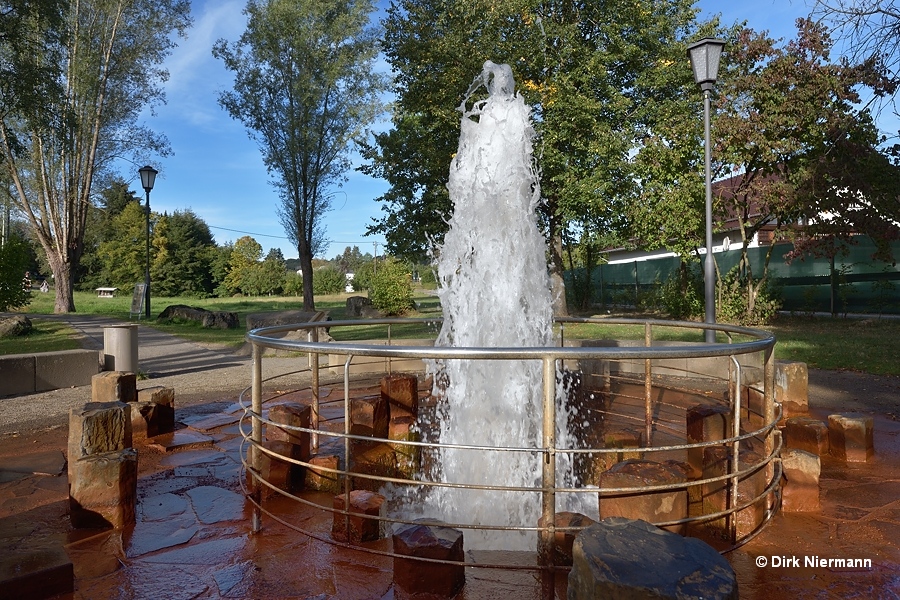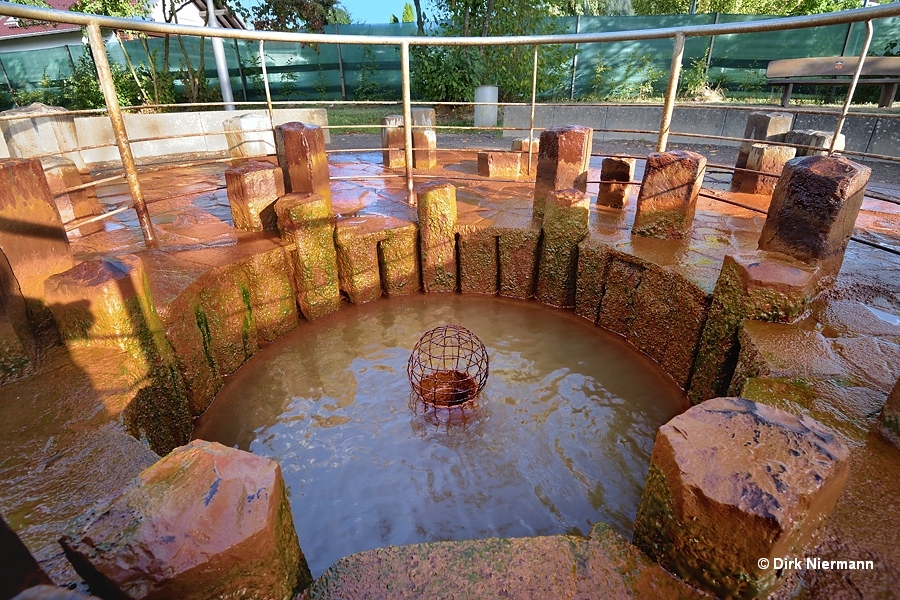Wallender Born
Besides Geysir von Andernach, the only other known cold-water geyser in the Vulkaneifel is called Wallender Born or Wallenborn, which loosely translates as surging well. Locals of the little village Wallenborn, the home of the spring, prefer the name Brubbel (bubbler). It is supplied with carbon dioxide by a cooling magma chamber at a depth of only 20 km (12 mi). Between Geysir von Andernach and Wallender Born are similarities and differences. Both are mofette, fed with carbon dioxide from magma in the depth, both are supported by boreholes, and both are erupting via the same natural phenomenon. In contrast to the Geysir of Andernach, whose eruption times are controlled by a valve, Wallender Born erupts in an unmanipulated manner in time to natural carbon dioxide accumulation and release. A further difference lies in the fact that Wallender Born was a natural spring right from its undocumented formation in a distant past, however, it was no spouter by nature.
From early on Wallender Born was already known to periodically release carbon dioxide bubbles, and so in 1933 a borehole was sunk to check if exploitation could be rewarding. At a depth of some 38 m (125 feet) the drilling opened a crevice and a sudden eruption of water, mud, and carbon dioxide occured. After stabilization of the borehole intermittent eruptions up to 10 m (33 feet) height continued from the high-rising pipe up into the 1950s. In 1975 the rim of the spring was paved and most of the tubing removed, so that gas-oversaturated water had to penetrate a thick layer of soil and came to light no longer in a jetting but in an intermittent seething manner. Erosion and gas leakages necessitated fundamental renovations in 1983 as well as in 2001. The latter one turned the spring into a well with a new filter tube of 40 m (131 feet) depth and 20 cm (7.9 in) in diameter, added a carved basalt and graywacke bordering and yielded the spectacular periodical eruptions Wallender Born is famous for today.

Current activity includes three stages. The initial eruption throws 7 - 10 °C (45 - 50 °F) cold water 2 - 4 m (6 - 13 feet) high in a series of distinct pulses, the first few ones ascending and all later ones gradually descending in peak tallness. The maximum height of the pulses depends mainly on groundwater level and a little bit on air pressure. After approximately 30 seconds the pulses calm down and get replaced by a rise of the water level and strong, bubbling overflow into the nearby Kirbach. 3 - 4 minutes after the start of the eruption the overflow stops and the water level recedes to its initial value. The third stage is a quiet phase around 30 minutes during which the water column and the gas pressure in the depth rebuild. Then the sequence is starting again. Just as with Geysir von Andernach the water is whitish clouded by precipitated calcite and deposits a reddish coating of iron oxide stained sinter around the rim.
